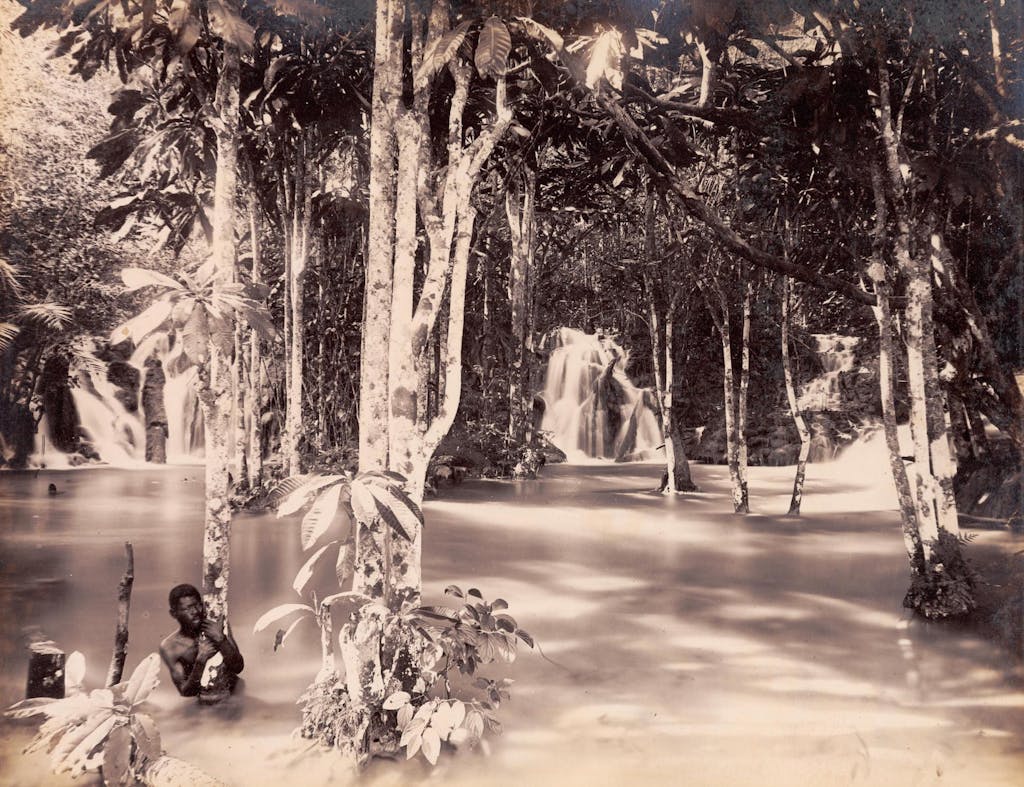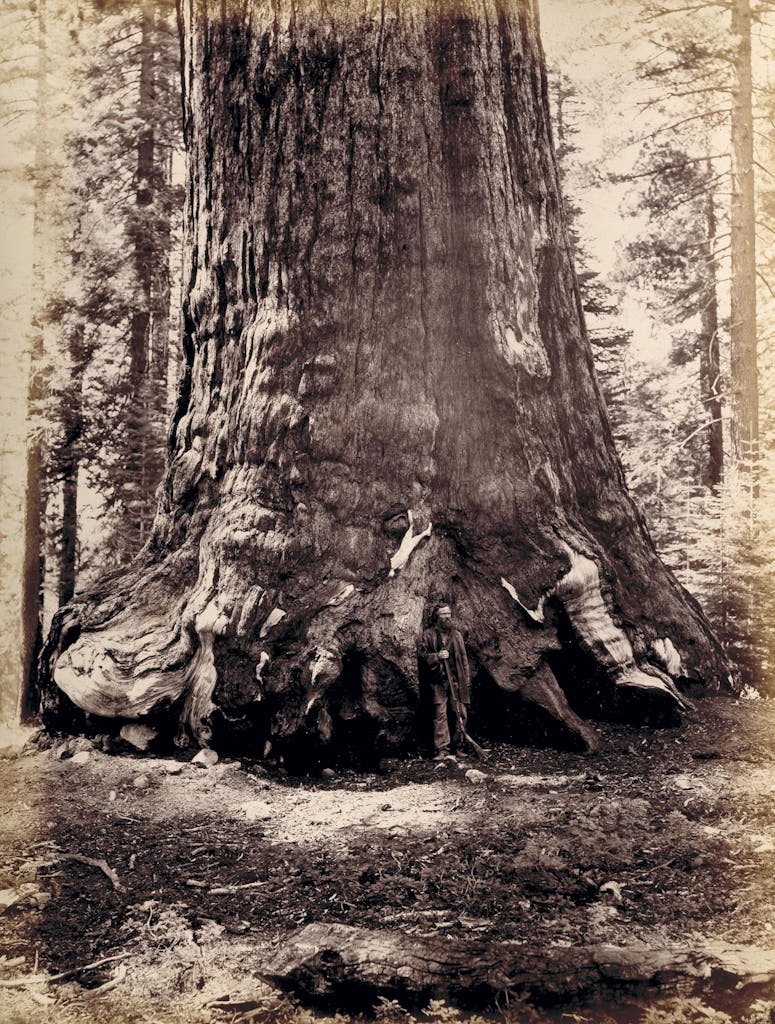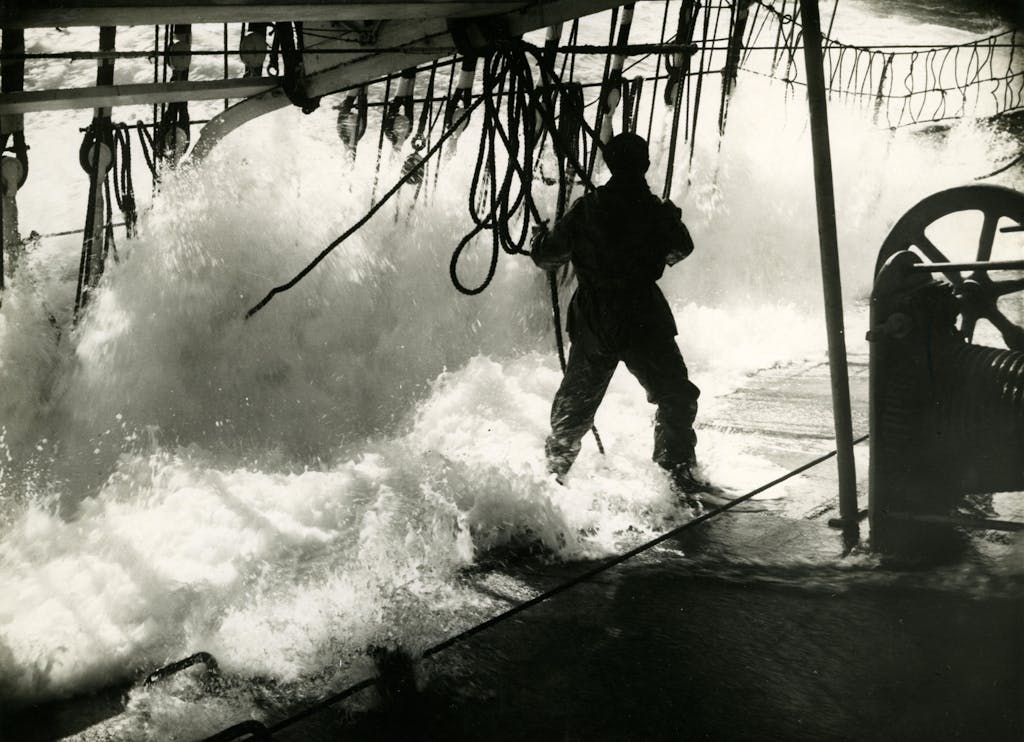Lights and Shadows Collection: Nature’s Might
From the sempiternally snowcapped summit of Japan’s Mount Fuji to the impossibly immense Californian sequoias, the beauty of nature is as stunning today as it was more than a century ago when these historical photographs were captured by pioneering travelers. As part of the collection Lights and Shadows – Photographs from the Royal Geographical Society (with IBG), these snapshots both preserve an indelible historical record and serve as an introduction to the Royal Geographical Society’s archive of over 500,000 historic images. Documenting and observing the world through photography has been a focus of the Society’s own work since the 1880s, when John Thomson was appointed as the Society’s official ‘Instructor of Photography’. Thomson referred to the medium as ‘the absolute lights and shadows of all things seen and that are of value in expanding our knowledge of the world in which we live’.
Elfin Grotto, Roaring River, St. Ann

Sir Harry Hamilton Johnston was an explorer, writer, natural scientist, artist, photographer, cartographer and imperial administrator.
A British Colonial Administrator in East Africa, Johnston took up photography as a hobby whilst serving in what was then the British Protectorate of Uganda and went on to use the medium to illustrate his lectures and talks, many of which were given at the Society.
This image of Jamaica is one of a series of photographs taken during Johnston’s travels to the Caribbean in the 1890s at the request of U.S. President Theodore Roosevelt, who asked Johnston to find out more about Cuba and the other Caribbean islands.
Today, Johnston’s photographic output – along with his watercolors and sketches of Africa – provide contemporary audiences with the opportunity to re-assess and re-consider the landscapes, people and places that he encountered, as a visual source rich with detail for family history and genealogical research.
Giant Sequoia with Galen Clark

Carleton Watkins began his career as a photographer during the ‘Gold Rush’, discovering his photographer’s eye whilst temporarily minding a friend’s studio. Made famous by his ‘mammoth’ sized prints – created in the field in 1861 by Watkins using giant glass plate negatives and the correspondingly large cameras required – these iconic images of the American West enabled viewers to understand the grandeur of this pristine landscape for the first time when exhibited in New York at the Goupil Gallery in 1862.
It is thought that Californian Senator John Conness showed his private set of the photographic prints to Abraham Lincoln. The President was so inspired by the images that he decreed Yosemite should be preserved as a natural wilderness, creating the first national park in the United States. Watkins’ life ended in poverty and obscurity, partly as a result of the destruction of his studio and all of its contents during the 1906 San Francisco Earthquake and subsequent fire; the two events conspiring to destroy the legacy of his glass plate negatives.
This image is thought to include a rare portrait of Galen Clark, the first European American to discover the Mariposa Grove of Giant Sequoia trees, and who is notable for his role in gaining legislation to protect it and the Yosemite area, and for 24 years serving as Guardian of Yosemite National Park.
Mount Fuji

Herbert Ponting is internationally recognised as a pioneer of modern polar photography, but his preceding travels as a photographer (and writer) in the Far East are less well known. Ponting’s early interest in the stereoscopic technique of photography brought him to the attention of Underwood & Underwood, publishers of stereographic photographs, who commissioned him to travel to Japan.
In 1905, work was completed on Ponting’s album ‘Fuji-san’, which contained 25 views of Mount Fuji and was first published in Tokyo. The success of this album then led to a companion volume, ‘Japanese Studies’, published in Yokohama in 1906, which demonstrated his developing flair for narrative camerawork. Printed using the latest collotype process, each of the 52 images was accompanied by a caption and a poetry extract.
The album was one of the first photographic records of Japanese culture to be made available to a general audience in the West.
Clearing Tangled Buntlines in a Gale

Eric Newby: author, editor, traveller and photographer, set out from Belfast in 1938 as an apprentice on the four-masted ship Moshulu, as part of what had become known as the ‘Grain Race’.
Traveling from Europe to Australia via the Cape of Good Hope, these barques would sail around the world, carrying grain that had been picked up in Australia before returning to their home ports. On the return journey, the ships would race for the fastest time back.
This would be eighteen year–old Newby’s initiation into an on-board world, providing him with a remarkable opportunity to document crew life and to take a sequence of accomplished photographs which show the challenges faced by the largely Finnish and Swedish crew.
Newby would publish his account, ‘The Last Grain Race’ in 1956 – his first travel book of over twenty – and went on to become the first Travel Editor at the Observer from 1964- 1973, inspiring a new generation of travel broadcasters and writers alike. A camera to hand, Newby continued to document his travels using photography throughout his life.
This article has been produced in collaboration with Silversea’s Corporate Business Partner, the Royal Geographical Society (with IBG), which enriches guests’ expeditions with over 500 years of geographical travel and discovery. Find out more here.
